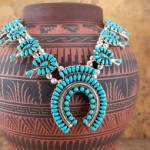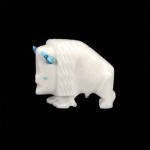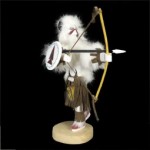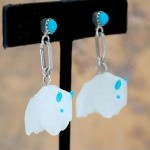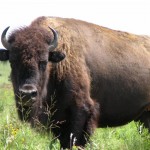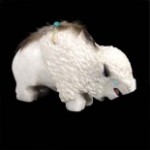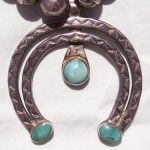 Today I’ll continue on the topic of the squash blossom; an instantly recognizable design commonly seen in turquoise jewelry.
Today I’ll continue on the topic of the squash blossom; an instantly recognizable design commonly seen in turquoise jewelry.
The Navajo began crafting the squash blossom as a type of simple necklace. Although today it is most commonly crafted in sterling silver, originally squashes were crafted in copper, steel & iron, and brass. These were more commonly found amongst trading tribes in the 1800s and early 1900s. Typically the Navajo represented an artist’s depiction of the actual flower of the squash blossom using simple metallic beads. It wasn’t until modern tools were introduced, such as soldering irons and metal working tools, that the delicate metal petals representing the squash blossom flower could be added. The center piece of any squash blossom is called the naja. The naja is the central piece that hangs at the lowest point on the necklace, almost like a pendant.
This squash blossom design became an immediately recognizable pattern in necklaces crafted by the Navajo. Its delicate look combined with the required high level of skill to craft the necklace guaranteed that it would be copied by other tribes.


